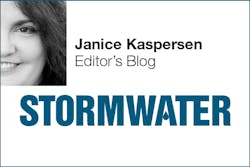
What does it take to get people to care about what’s going on in their watershed? Or maybe there’s a question we need to ask even before that one—how many people really understand the dynamics of the water cycle, or for that matter what a watershed is? (Previous studies have shown that a significant number of people, when asked, say they don’t live in or near a watershed.)
A few months ago, we ran an article in Stormwater magazine about an educational program in Bozeman, MT, that’s teaching elementary school students about the health of their watershed and about water conservation. As the article points out, and as I noted in an editorial in that same issue, the program is producing impressive—and measurable—results. It’s based in part on the idea behind recycling education in the 1980s and ’90s: If kids learn the basic concepts and reasons for recycling in school, they’ll take those ideas home with them and pass them along to their parents. Research has borne this out—households with children who learned about recycling in school actually recycled more.
Another article that’s been getting some attention in online discussions recently is “Growing Up Green: Becoming an Agent of Care for the Natural World” by Louise Chawla; it covers not only how children learn but what makes them care about environmental issues in the first place. The article suggests that for educational programs to have a real effect, they need to engage kids through more than just classroom learning. Children must develop a “sense of efficacy,” and that happens most readily “when they attempt to do something that they consider significant and experience success.” Hands-on projects like those in the Bozeman program seem to fit with this model of teaching. Project WET (Water Education for Teachers), which was a partner in developing the program, emphasizes this idea in its programs by having students work to analyze and solve real-world problems in their local communities.
There are a few downsides, though, including finding the resources to carry out the programs—training the teachers, allocating time that might be spent on other activities, and so on. There is also the occasional objection from the parents of the students. The Stormwater article’s authors note, “One teacher heard from parents who perceived that their child was being manipulated by propaganda about water conservation as a stepping stone to discussions about climate change, which they did not believe in.” That’s an element teachers must be prepared to deal with as well.
On a slightly different education-related note, we recently sent out a survey to a number of readers and people who’ve taken Forester’s webinars, asking about educational opportunities—degree programs, certifications, and the like—for those in the stormwater field. You might have received the email, but if you haven’t and you’d like to participate (there are only four questions so it won’t take much of your time), click here to take the survey.
About the Author
Janice Kaspersen
Janice Kaspersen is the former editor of Erosion Control and Stormwater magazines.